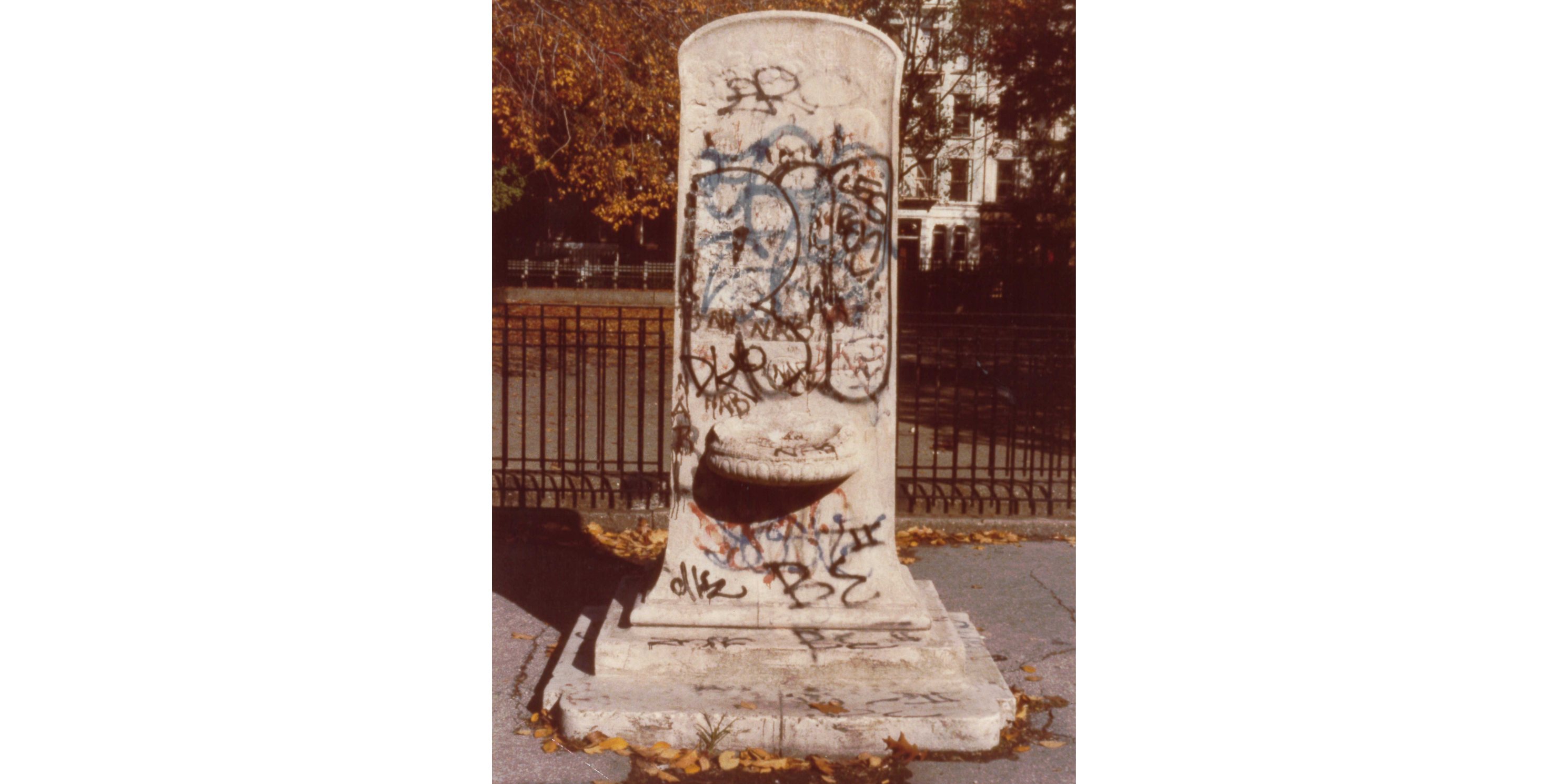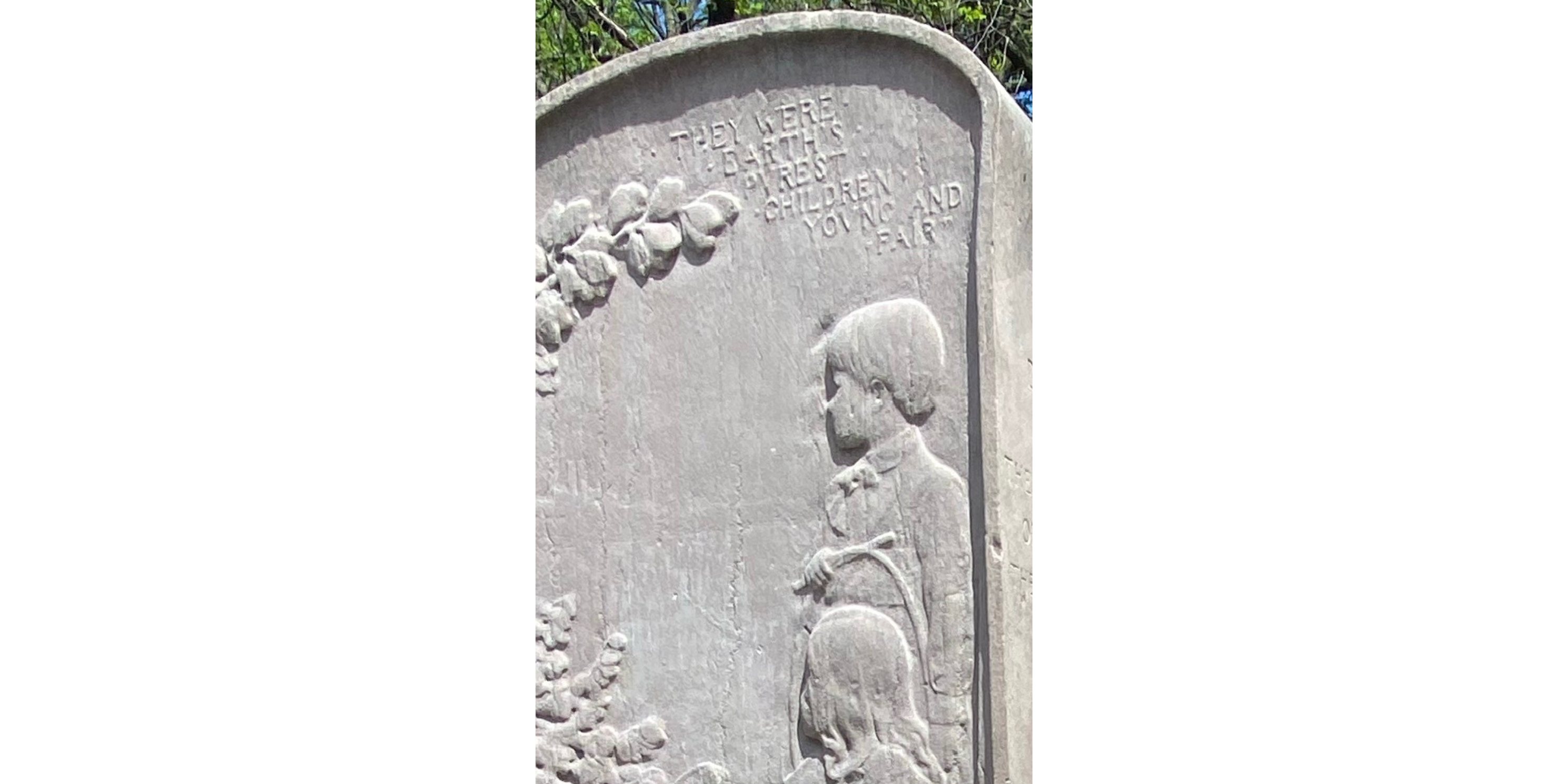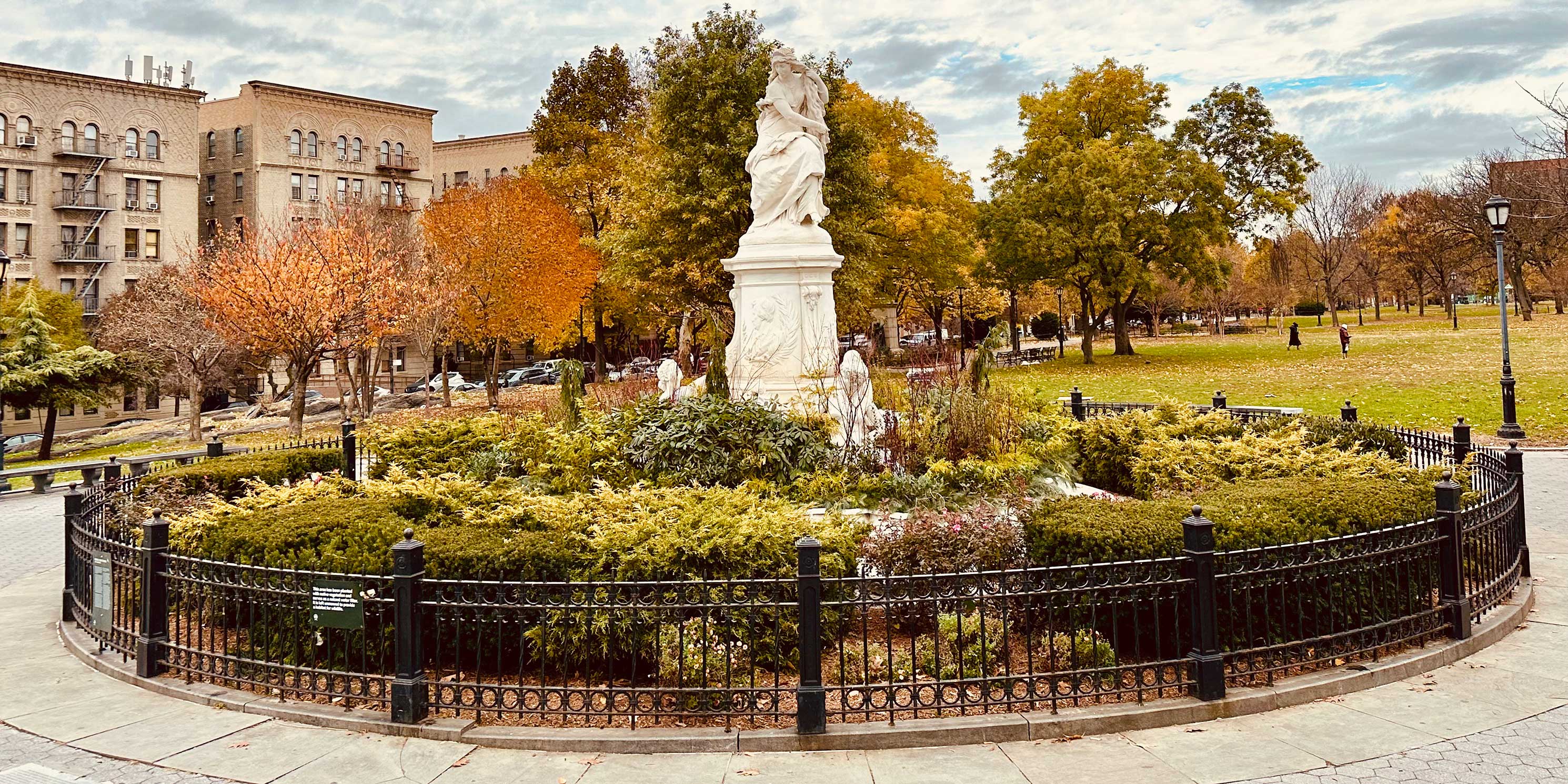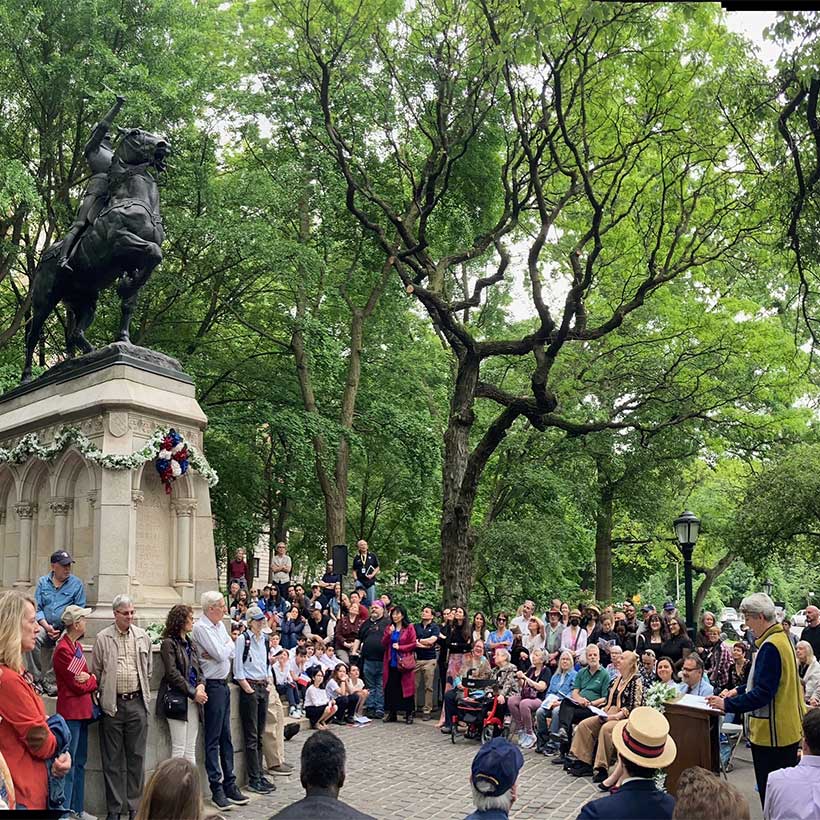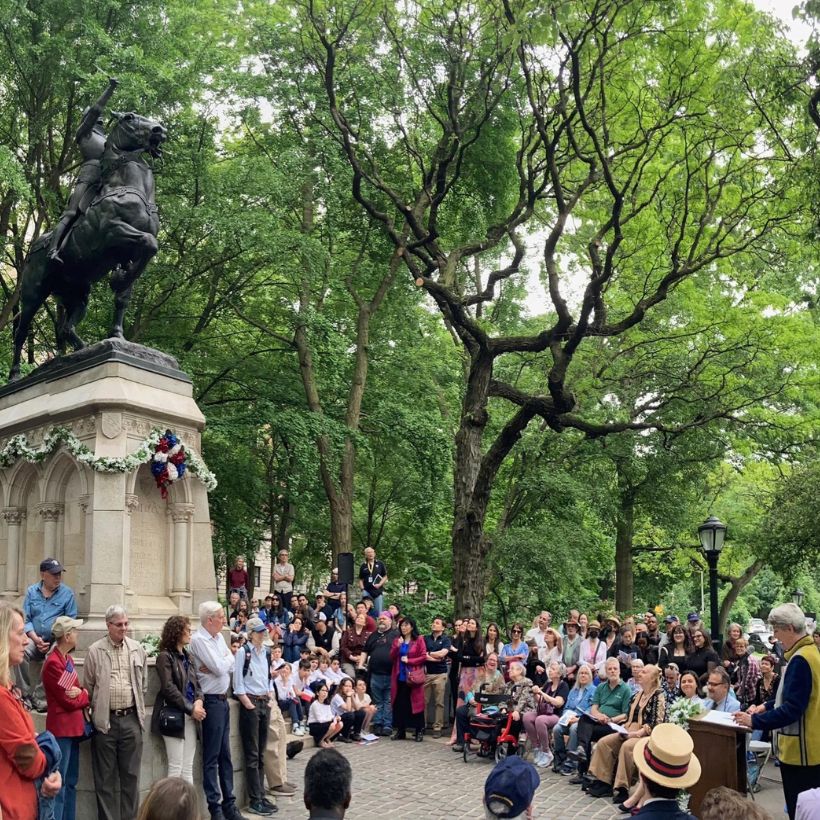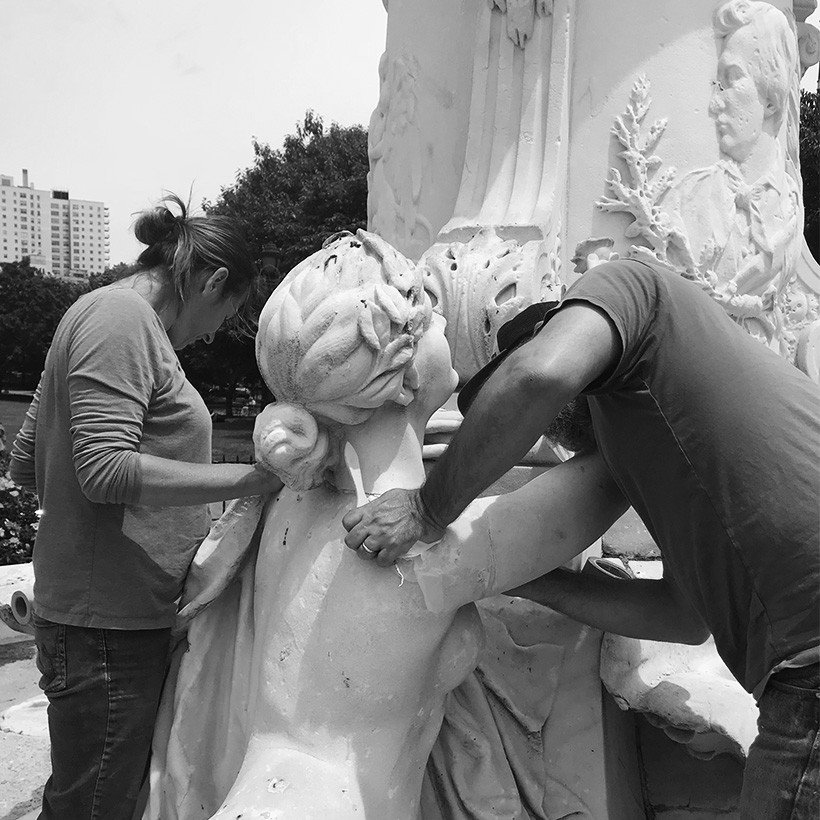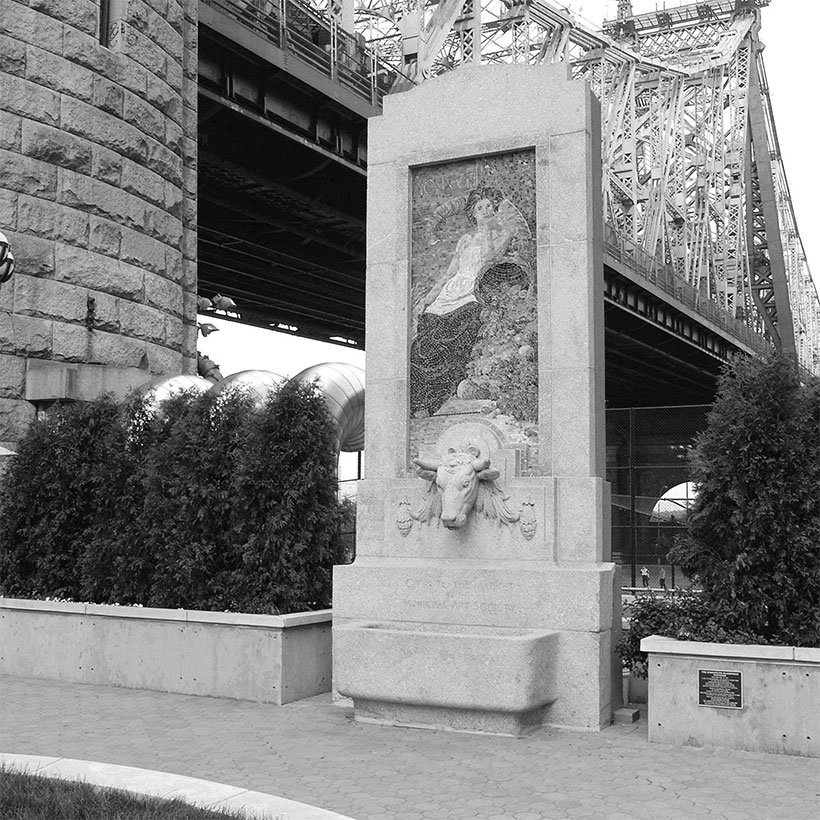Adopt-A-Monument Highlight: Slocum Memorial Fountain
The Municipal Art Society of New York (MAS) launched the Adopt-A-Monument program in 1987 in collaboration with the NYC Public Design Commission and the NYC Parks Department, to secure private funding for the rescue of public art in danger of deterioration. To date, MAS’s Adopt programs have raised nearly $4 million dollars to conserve 51 works of art in all five boroughs.
This June marks the 121st anniversary of the General Slocum disaster, the largest loss of civilian life in New York City in a single day until the September 11 attacks nearly a century later. The Slocum Memorial Fountain in Tompkins Square Park, which is within MAS’s Adopt-A-Monument program, is one of two smaller-scale monuments in the city that commemorate this enormous tragedy.
The General Slocum excursion steamer caught fire on the East River June 15, 1904, where it had been ferrying 1,342 members of St. Mark’s Evangelical Lutheran Church to their annual church picnic on Long Island. Such a day trip during this period would have been considered a vacation, anticipated for months and remembered as one of the big events of the year. Most passengers were German immigrant residents from the crowded Lower East Side, (then known as “Kleindeutschland” or “Little Germany”), many of them newly arrived in the United States.
Entire families had joined the trip, with the majority of passengers women, children, and infants. The disaster claimed the lives of 1,021 people; almost as many lives lost as in the sinking of the Titanic in 1912, but curiously, most New Yorkers have never heard of the General Slocum. Soon after the terrible accident, German residents left the neighborhood, which had a population of 50,000 people at the turn of the century. They moved to Yorkville, other boroughs, or outside the city. St. Mark’s Church later merged with Yorkville’s Zion Lutheran Church which exists to this day, but the congregation’s old building remains in the East Village/Lower East Side Historic District, now used by the Sixth Street Community Synagogue.
Over the last century, the memorial has become a diminutive reminder of this immense catastrophe; its small-scale fitting with the events erasure from mainstream knowledge. It’s hushed presence in Tompkins Square in the vibrant East Village neighborhood stands not only as an important monument but as a gesture to the critical storytelling ability of public art to remember and honor the past, especially marginalized or forgotten histories.
Erected in 1906 as a gift of the Sympathy Society of German Ladies, the memorial fountain was designed by Bruno Louis Zimm (1867-1943), a prominent American sculptor, who’s work in New York City include a similarly designed fountain on Manhattan’s Riverside Drive. The Slocum Memorial Fountain is made of subtly veined pink Tennessee marble, with a fading Percy Shelley quote, “They Were Earth’s Purest Children, Young and Fair.” A boy and a girl, one holding a toy hoop and stick, look out at a ship seen faintly in the distance.
Over time, the fountain was moved throughout the park before experiencing disrepair and vandalism, which had obscured the imagery and meaning of the memorial. It was restored through the Adopt-A-Monument program, which MAS initiated in 1987 to address the deterioration of public art in the midst of economic uncertainty. The original restoration included stonework repair and graffiti removal from the marble. Today, through MAS’s Adopt program, NYC Parks performs annual maintenance on the memorial.
From May 2023 until March 2025, the memorial was hidden from public view during the NYC Parks Field House Reconstruction in the park. The mayoral-funded $5.6 million project renovated the park bathrooms and improved the “Slocum area” behind these bathrooms which includes the memorial fountain, benches, table tennis, and green space. MAS was pleased to see how the capital project transformed an area in desperate need of maintenance, and how the Slocum Memorial Fountain has been cleaned and its water fixture repaired. This summer, as the fragile marble continues to erode in acid rain, NYC Parks plans to take a rubber mold from the fountain’s relief sculpture, and create a plaster reference record.
MAS is grateful to NYC Parks for continuing to preserve this delicate piece of local history, supporting an effort to never forget this terrible event and how it shaped our city. With the memorial once again accessible to the public among activated open space, MAS believes that it will continue to raise awareness of this tragedy, and remember the innocent lives lost.

